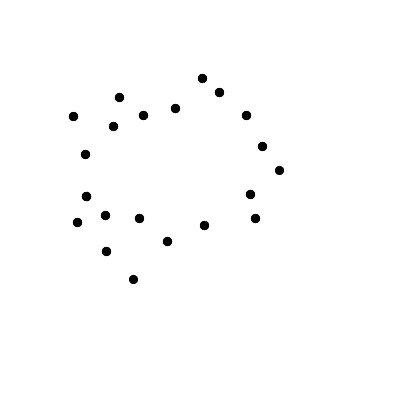Hubs detection in graphs and networks
Want the short version?
Take a look to these slides.
Motivation
Graphs and networks play an essential role in both modern data representation and processing. The topology of these entities encodes essential information, it is enough to think how the performance of an artificial neural network changes according to the organization of the connections between its computing units.
Topological approaches to data representation and in particular persistent homology (wiki) are nowadays largely used for shape comparison and classification.
What about graphs and networks? Is it possible to build a theory of persistence beyond geometry and topology?
Topological persistence and data analysis
Topological data analysis (wiki) allows to grasp geometrical and topological features of both manifold and sampled data.

Th image on the left has been taken from this beautiful post. You can see how it is possible to associate a geometrical entity (a simplicial complex) to a point cloud, by considering the pairwise distances between the points of the cloud. Imagine to center a sphere on each points and make the radius of these spheres grow in time. When two spheres intersect we draw an edge between their centers, a triangle when three spheres intersect.
By looking at the evolution of the construction in the figure, a human observer can easily understand how the points have probably been noisily sampled from a torus (a donut). The construction of the simplicial complex while increasing the radius can be described by considering the variation of the homology groups (wiki) of the associated simplicial complex.
By changing the (continuous) function that determines the rule to be followed during the construction of the simplicial complex we can study different geometrical features of a given object (whether sampled or not).

Topology and graphs
This classical framework can be used to study graphs, by using auxiliary construction, that allow to associate a topological object, such as the simplicial complex in the first figure, with a given graph. Here we give some basic references and show how different graph-theoretical concepts can be used to fingerprint information from a given network in the classical topological paradigm.
Beyond topology: Hubs persistence
It is time to answer to the questions we were asking before: Is it possible to define a theory of persistence whose foundation does not depend on topological constructions such as homology?
Well, yes. It is possible to define a persistence framework in a very general case (we work with concrete categories). In particular, we can consider weighted graphs and study the persistence of graph-theoretical concept like cliques, independent sets of vertices, or Eulerian vertices, without needing any auxiliary topological construction. For mathematical details, the special case of weighted graphs as well as some of the examples shown below are discussed in this slideshow. In a forthcoming paper we will give the results supporting this theory in a larger categorical framework.
Hubs
It is natural to ask which nodes of a network are more relevant, and if it is possible to rank them. Here, we explore a hub-detection algorithm based on this new concept of combinatorial persistence. The theory allows to represent as a persistence diagram the pair given by a graph and a property defined on its subgraphs.
Practically consider the simple weighted graph in the figure below on the left. The weights on its vertices induce naturally a filtration of nested subgraphs (left in the figure).


Static Networks
Les miserables
By considering the standard co-occurrences in Les Miserables we obtain the graph below, where hubs are represented as dark-blue spheres. Move the graph by clicking and dragging, zoom by dragging. Mouse over returns the name of the character associated to the considered vertex. If it is a hub, it also show its persistence and its ranking with respect to the other detected hubs.
The study of the hubs of this graph gives the persistence diagram on the right.
Clique communities
The property of a vertex to be a temporary hub can be substituted with the one of a subgraph to be the maximal Eulerian subgraph at a given sublevel. By doing so, we obtain a fingerprint like

Time-varying networks
The theory extends naturally to time-varying systems. Thus, yet another hubs detection for Game of Thrones… In the figure only characters representing hubs are depicted. The area corresponds to the persistence of a character, computed with respect to a given book. Mouse-over will display on the top-left corner the name of the considered character, its persistence along the four books and the current position of the mouse, with respect to the books reference system.



